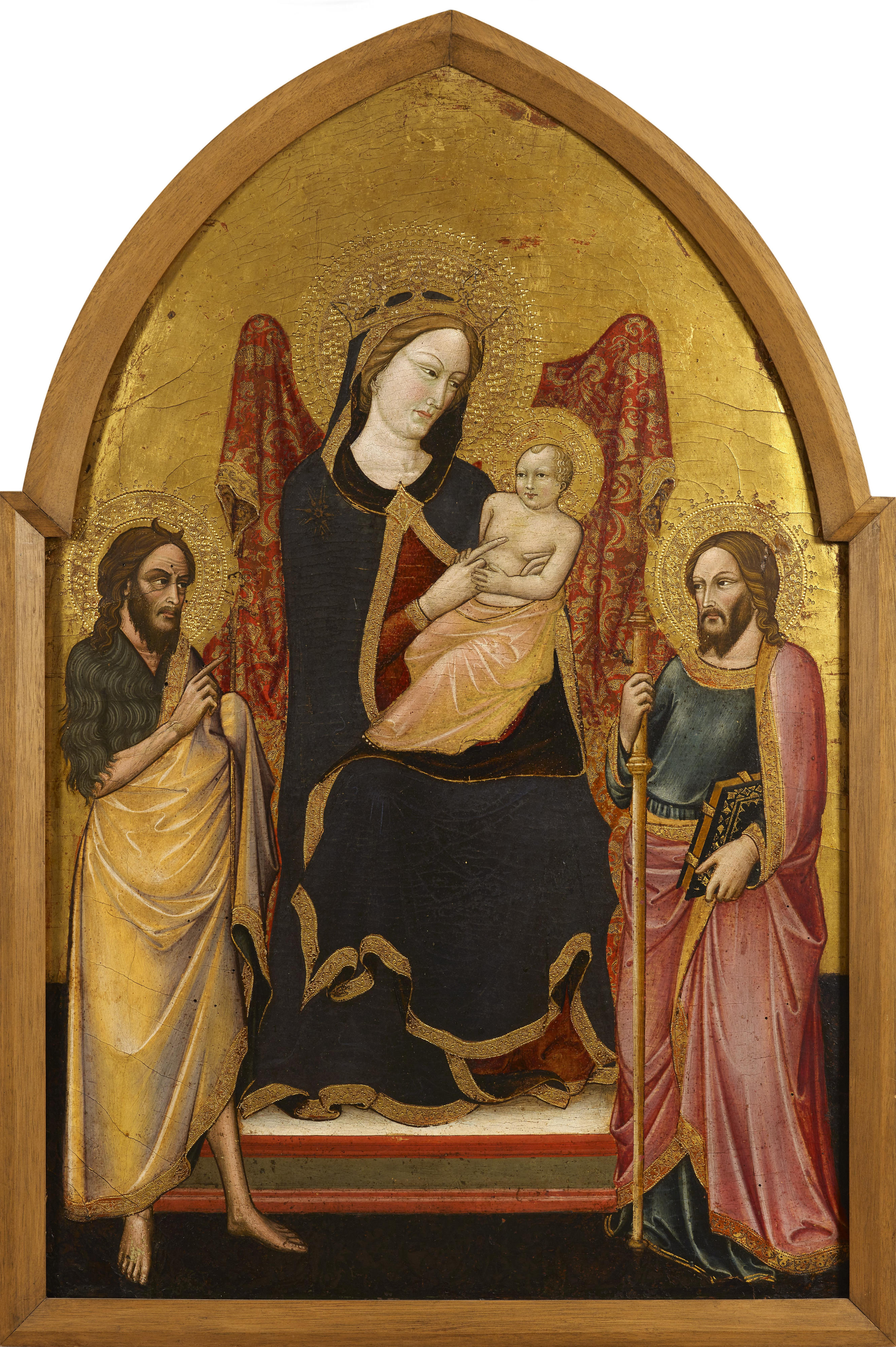Alvaro Pirez d'Évora
b. Évora, active 1411-34
Madonna and Child with Saints John the Baptist and James the Greater
c. 1415
Tempera and gold on panel
73 x 49 cm (28 3/4 x 19 1/4 in.)
Provenance
Sotheby’s, London, 16 April 1980, lot 65,
Private Collection, Florence,
with Moretti Gallery, Florence and London,
Private Collection, Milan.
Literature
D. Parenti in ed. M. T. Filieri, Sumptuosa tabula picta. Pittori a Lucca tra Gotico e Rinascimento, exhibition catalogue, Livorno, 1998, pp. 290–29.
L. Sbaraglio, ‘A Kaleidoscopic world. Origin and Development of the Art of Alvaro Pirez’, in Alvaro Pirez d’Évora. A Portuguese painter in Italy in the Eve of the Renaissance, exhibition catalogue, Lisbon, 2019, p. 22.
Description
Alvaro Pirez d’Évora was born in one of the oldest cities in Portugal's interior, probably around 1380. His place of birth is known from a signature on one of his most important works, the Madonna and Child with Angels in the church of Santa Croce in Fossabanda, Pisa. The painter’s Portuguese origins are also recorded in various contemporary documents, as well as in signatures on other works such as triptych painted for the cathedral of Volterra (now in the Pinacoteca in the same city), the dispersed polyptych for San Francesco in Volterra and the polyptych painted for the church of Sant’Agostino in Nicosia in Calci (now in the Museo Nazionale di San Matteo in Pisa). No evidence for his time in his native Portugal has yet been discovered.
The artist must have moved to Italy, where he was known as Alvaro di Pietro, at a young age, perhaps at the very beginning of the fifteenth century or even slightly earlier. This can be deduced from the style of his earliest works, which are clearly related to the artistic circles of this period active in Pisa, Lucca and Florence. His oeuvre, meanwhile, has been reconstructed largely on the basis of the aforementioned paintings in Pisa and Volterra, as well as a triptych in the Herzog Anton Ulrich Museum in Braunschweig signed Alvarus Petri and dated 1434.
As noted by Lorenzo Sbaraglio in the catalogue of the 2019 monographic exhibition, the first ever devoted to the Portuguese painter, Pirez’s initial training took place in Pisa. In the Tuscan city the most important figures at the end of the fourteenth century were the Sienese painters Taddeo di Bartolo and Martino di Bartolomeo, as well as the local artist Turino Vanni. One of earliest paintings by Pirez is probably the Madonna and Child with Saints Bartholomew and Anthony Abbot now in the Museu Nacional in Evora (fig. 1) whose stocky, square figures are clearly related to the models of Turino Vanni. Later works, datable to around 1410–15, reveal the influence of Florentine painters like Lorenzo Monaco and of the Lucchese artist Angelo Puccinelli; it is to this moment that the present painting should be dated.
The present painting, auctioned in London in 1980 with a generic attribution to the Florentine school, was ascribed to Alvaro Pirez by Miklós Boskovits and first published by Daniela Parenti in the catalogue of the exhibition on the painting in Lucca held in 2008. Parenti dated the painting around 1410–15, noting that the panel combines features of Pirez’s early career, such as the bulky figure of the Virgin, with more modern elements, for example the elegant detail of showing the Baptist’s hand draped in the saint’s own mantle, a motif derived from Lorenzo Monaco.
Fig. 1. Alvaro Pirez, Madonna and Child with Saints Bartholomew and Anthony Abbot, Museu Nacional, Évora.



